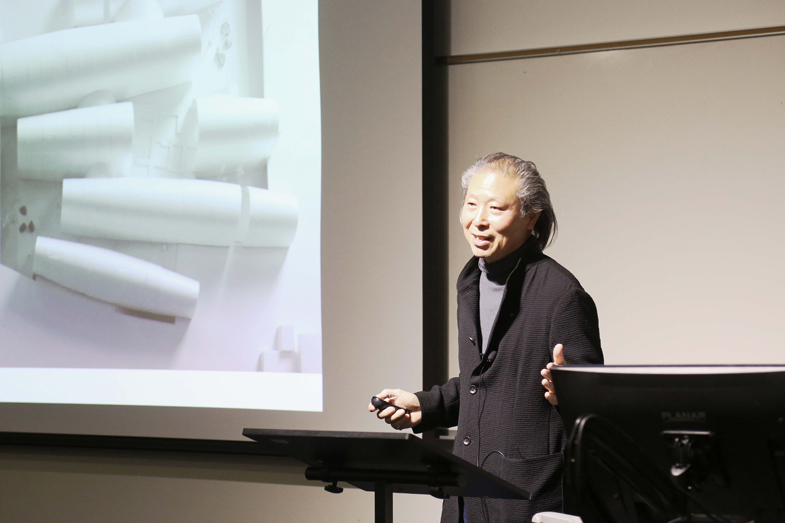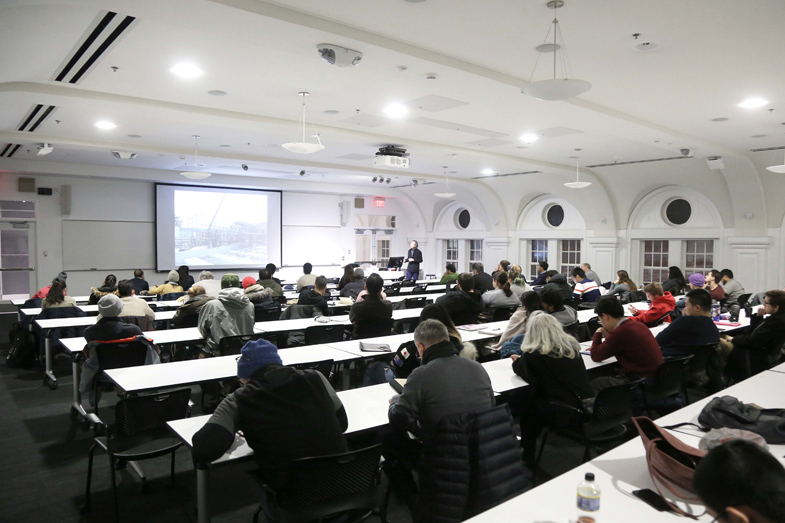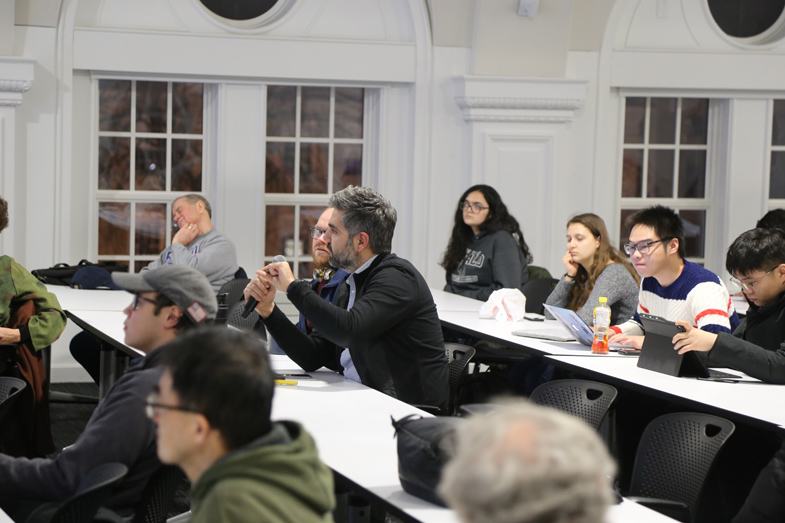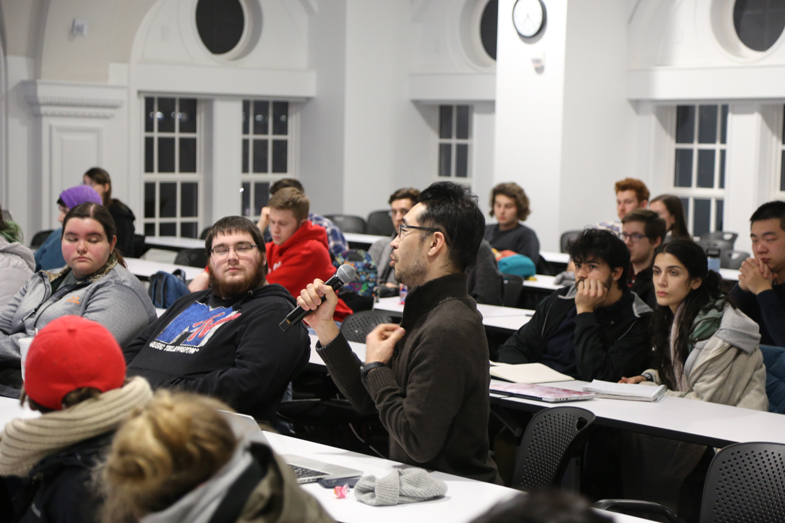Zhu Pei delivered a lecture in the Spring 2019 Lecture Series at UB School of Architecture and Planning
2019.02.20

On the evening of February 13rd, 2019, Mr. Zhu Pei was invited to give an academic lecture entitled “Root, rethinking of Chinese Contemporary” at University at Buffalo. In the speech, he focused on the concept of "architecture of nature", and illustrated the origin and contemporaneity of architectural creation by describing the design process and the experience and inspiration of the construction of the Imperial Kiln Museum in Jingdezhen. In his philosophy, "architecture of nature" refers to an attitude to nature rather than a sort of nature understood in a narrow sense. Such an attitude means that a rootedness from top down in architecture is determined by the specific factors of region, climate, culture, and tradition. It is not literally about building something in the woods, but concerned with the laws of natural construction beneath the mere appearance of architecture. He believes the significance of architecture lays not on what that is conducted by human subjectively, but on what that is shaped by region and culture. In the old town of Jingdezhen, it is a tradition to build houses and pave roads by using bricks from old kilns. Every two to three years the old kilns are dismantled and reconstructed due to their declining performance in heat storage, so the bricks from those deserted kilns become the main material for the construction of the city. Accordingly, the recycled use of the old kiln bricks is established as a law in such a natural way other than any subjective preference. This exactly confirms the concept of "architecture of nature". Mr. Zhu also shared the construction process of this project with the audience. Because of the ingenuity and the handwork of the craftsmen, the whole process has a very interesting echo to the process of making porcelain. This also carried out the origin and contemporaneity theme. He concluded that:"as an architect, it is an important part to look for the origin and contemporaneity of architectural creation. If we follow the trend towards rational, technology-driven specialization, then there will be no surprises, maybe some kind of exclamation, but it will be hard to get into our emotions.


Zhu Pei delivered a lecture in the Spring 2019 Lecture Series at UB School of Architecture and Planning
2019.02.20

On the evening of February 13rd, 2019, Mr. Zhu Pei was invited to give an academic lecture entitled “Root, rethinking of Chinese Contemporary” at University at Buffalo. In the speech, he focused on the concept of "architecture of nature", and illustrated the origin and contemporaneity of architectural creation by describing the design process and the experience and inspiration of the construction of the Imperial Kiln Museum in Jingdezhen. In his philosophy, "architecture of nature" refers to an attitude to nature rather than a sort of nature understood in a narrow sense. Such an attitude means that a rootedness from top down in architecture is determined by the specific factors of region, climate, culture, and tradition. It is not literally about building something in the woods, but concerned with the laws of natural construction beneath the mere appearance of architecture. He believes the significance of architecture lays not on what that is conducted by human subjectively, but on what that is shaped by region and culture. In the old town of Jingdezhen, it is a tradition to build houses and pave roads by using bricks from old kilns. Every two to three years the old kilns are dismantled and reconstructed due to their declining performance in heat storage, so the bricks from those deserted kilns become the main material for the construction of the city. Accordingly, the recycled use of the old kiln bricks is established as a law in such a natural way other than any subjective preference. This exactly confirms the concept of "architecture of nature". Mr. Zhu also shared the construction process of this project with the audience. Because of the ingenuity and the handwork of the craftsmen, the whole process has a very interesting echo to the process of making porcelain. This also carried out the origin and contemporaneity theme. He concluded that:"as an architect, it is an important part to look for the origin and contemporaneity of architectural creation. If we follow the trend towards rational, technology-driven specialization, then there will be no surprises, maybe some kind of exclamation, but it will be hard to get into our emotions.

